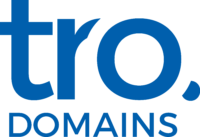Introduction to Online Presence
In the modern digital landscape, the significance of a robust online presence cannot be overstated. It serves as the cornerstone of visibility, trustworthiness, and engagement with potential and existing customers. As we move towards 2025, this becomes even more critical. A compelling online presence not only helps businesses stand out but also paves the way for meaningful interactions and growth.
The concept of online presence goes beyond merely having a website. It encompasses a cohesive digital footprint that includes your website, social media profiles, and any other online platforms where your business is represented. This unified approach helps in establishing brand consistency and making a lasting impression on your audience.
In the context of 2025, the tools available to create and maintain an online presence have evolved significantly. Among these tools, cheap Website Builders have become particularly noteworthy for their accessibility and affordability. These platforms have levelled the playing field, allowing even small businesses with limited budgets to establish a professional and appealing online presence.
One of the primary advantages of using a cheap Website Builder is the ease with which you can create and manage your website. These platforms are designed with user-friendliness in mind, enabling individuals with little to no technical expertise to build a functional and attractive site. This democratization of web design ensures that more businesses can compete in the digital marketplace without needing to invest heavily in professional web development services.
Another key aspect to consider is the array of features offered by these Website Builders. From pre-designed templates to drag-and-drop interfaces, these tools simplify the process of website creation. They often include essential elements such as SEO tools, e-commerce capabilities, and mobile responsiveness, ensuring that your site not only looks good but also performs well in search engines and on various devices.
Additionally, the ongoing support and updates provided by Website Builders are invaluable. As the digital landscape continues to evolve, staying updated with the latest trends and technologies is crucial. These platforms regularly roll out updates and new features, ensuring that your website remains current and competitive.
It’s also worth noting the role of analytics in maintaining a strong online presence. Many cheap Website Builders come equipped with built-in analytics tools, allowing you to monitor visitor behaviour, track performance metrics, and make data-driven decisions. This insight is instrumental in fine-tuning your online strategy and maximising the effectiveness of your digital efforts.
In essence, the importance of a well-rounded online presence is more pronounced than ever. With the help of affordable Website Builders, businesses can create a professional, functional, and visually appealing website that serves as a hub for their digital activities. This foundation is critical for engaging with your audience, building brand loyalty, and driving growth in an increasingly digital world.
Choosing the Right Website Builder
Selecting the right Website Builder is crucial for constructing a site that meets your needs without breaking the bank. When considering your options, think about the cost, ease of use, and available features. Website builders are generally priced between £8 to £40 monthly, and this often includes web hosting and domain registration. This makes them an economical choice for small businesses or entrepreneurs. Among the popular choices, Wix has emerged as a leader, capturing over 22% of the worldwide market share back in 2018. Other notable options include Weebly, Squarespace, and WordPress.com, each offering unique advantages that cater to different user preferences.
When choosing a Website Builder, it is important to assess the specific needs of your business. Do you require an e-commerce platform to sell products, or is a portfolio site to showcase your work sufficient? Builders like Shopify are tailored for online stores, offering robust inventory management and payment processing features. In contrast, platforms like Squarespace are renowned for their design-centric templates, making them ideal for creatives who want a visually appealing site.
Ease of use is another significant factor. A user-friendly interface can save time and reduce frustration, especially for those with limited technical skills. Drag-and-drop builders are particularly advantageous as they allow for straightforward customisation without any coding knowledge. Wix and Weebly are known for their intuitive interfaces, making it easy to add, remove, and rearrange elements on your site.
The range of available features is also paramount. SEO tools, mobile responsiveness, and integration with social media are essential for a modern website. Many builders come with built-in SEO features, which can help improve your site’s visibility in search engines. Additionally, mobile responsiveness ensures your site looks good and functions well on all devices, which is crucial given the increasing number of users accessing the internet via smartphones and tablets.
Customer support and resources are other aspects to consider. Reliable support can be a lifesaver when you encounter issues or have questions about your site. Look for builders that offer comprehensive support through various channels such as live chat, email, and phone. Online resources like tutorials, FAQs, and community forums can also be extremely helpful for troubleshooting and learning.
Another element worth noting is the flexibility and customisation options offered by the builder. While pre-designed templates can simplify the design process, having the ability to customise these templates allows for a more unique and personalised website. Platforms like WordPress.com offer extensive customisation options through themes and plugins, giving you the freedom to tailor your site to your specific needs.
Lastly, scalability should not be overlooked. As your business grows, your website needs may evolve.
Planning Your Website Design
Effective website design begins with careful planning to ensure your site is both visually appealing and highly functional. Start by defining your primary objectives: what do you want visitors to do when they land on your site? Whether it’s making a purchase, signing up for a newsletter, or contacting your business, your design should guide users towards these goals effortlessly.
Begin with a wireframe or a simple sketch of your website’s layout. This step helps in organising the structure of your site and visualising how different elements will be positioned. Keep your design clean and uncluttered, focusing on a minimalist aesthetic that enhances user experience rather than overwhelming it. Prioritise readability by choosing easy-to-read fonts and a colour scheme that aligns with your brand identity.
Navigation is another crucial element. A well-structured menu ensures that visitors can easily find what they are looking for, reducing bounce rates and increasing the time spent on your site. Use clear, descriptive labels for your navigation links and avoid jargon or overly technical terms that might confuse users. Implement a search bar to assist users in locating specific information quickly.
Consider the importance of visual hierarchy in your design. Highlight key information by using larger fonts, bold text, or contrasting colours. Ensure that call-to-action buttons are prominent and encourage user interaction. Use images and videos strategically to break up text and add visual interest, but avoid overloading your pages with multimedia that can slow down loading times.
Responsiveness is non-negotiable in today’s mobile-first world. Ensure your design is mobile-friendly, adapting seamlessly to various screen sizes and orientations. Test your site on multiple devices to verify that it performs well across the board, providing a consistent user experience whether accessed from a desktop, tablet, or smartphone.
SEO considerations should also influence your design choices. Opt for SEO-friendly templates that facilitate better indexing by search engines. Incorporate headings, subheadings, and alt text for images to enhance your site’s visibility in search results. Use lightweight, clean code to improve loading times, as faster sites often rank higher on search engines.
Functionality should not be sacrificed for aesthetics. Integrate features that enhance user engagement, such as interactive forms, chatbots, or social media feeds. Ensure that any interactive elements are intuitive and add value to the user experience. Avoid unnecessary complexities that can frustrate users or cause technical issues.
Finally, pay attention to accessibility to ensure your site can be used by everyone, including those with disabilities. This includes using alt text for images, providing transcripts for videos, and ensuring that your site is navigable via keyboard. Compliance with accessibility standards not only broadens your audience but also improves your site’s overall usability.
By meticulously planning your website design with these considerations in mind, you can create a site that is both attractive and highly functional, effectively engaging visitors and driving them towards your desired outcomes.
Content Creation Strategies
Content creation is pivotal in attracting and retaining visitors to your website. To develop content that resonates with your audience, it’s essential to understand their interests, needs, and pain points. Start by conducting thorough research to identify topics that are relevant to your target demographic. Tools like Google Analytics, social media insights, and keyword research can provide valuable information about what your audience is searching for and engaging with.
Once you have a clear understanding of your audience, tailor your content to address their specific concerns and interests. Use a conversational tone to make your content more relatable and engaging. Storytelling can be particularly effective in capturing attention and making your message more memorable. Share case studies, testimonials, or behind-the-scenes stories to humanise your brand and build a connection with your readers.
Variety is key in content creation. Diversify your content formats to cater to different preferences. Blog posts, videos, infographics, and podcasts can all serve different purposes and appeal to various segments of your audience. For instance, videos are excellent for demonstrating products or explaining complex concepts, while infographics are great for presenting data and statistics in an easily digestible format.
Optimising your content for search engines is crucial for improving visibility and driving organic traffic. Incorporate relevant keywords naturally within your content, titles, and meta descriptions. Avoid keyword stuffing, as it can lead to a poor user experience and potential penalties from search engines. Focus on creating high-quality, informative content that answers your audience’s questions and provides value.
In addition to keywords, use internal and external links to enhance your content’s SEO. Internal links guide visitors to other relevant pages on your site, encouraging them to spend more time exploring your offerings. External links to reputable sources can lend credibility to your content and improve your site’s authority.
Engagement is a critical component of content creation. Encourage interaction by asking questions, inviting comments, and including calls-to-action. Whether it’s prompting readers to share their thoughts in the comments section or encouraging them to download a free resource, clear calls-to-action can drive engagement and conversions.
Consistency is another vital factor. Establish a regular publishing schedule to keep your audience engaged and returning for more. Whether you choose to publish content weekly, bi-weekly, or monthly, stick to your schedule to build trust and anticipation among your readers.
Don’t overlook the importance of visuals in your content. High-quality images, graphics, and videos can significantly enhance the appeal of your content. Ensure that visuals are relevant and add value, rather than merely serving as decorative elements. Use alt text for images to improve accessibility and SEO.
Lastly, measure the performance of your content using analytics tools. Monitor metrics such as page views, time on page, bounce rates, and social shares to gauge what resonates with your audience. Use these insights to refine your content strategy, focusing on what works and continually improving your approach.
Enhancing Functionality with Plugins
Plugins offer a versatile way to enhance the functionality of your website, providing numerous features without requiring advanced coding skills. They can be seamlessly integrated into your site to address specific needs and improve overall user experience. One of the primary benefits of plugins is their ability to add specialised functions that may not be included in the core features of your website builder.
SEO plugins are essential for boosting your site’s visibility on search engines. These tools help you optimise your content by providing suggestions for keyword placement, meta descriptions, and readability improvements. Some popular SEO plugins also offer insights into how your pages are performing in search rankings, allowing you to make data-driven adjustments.
Social media integration plugins are another valuable addition. These tools make it easy for visitors to share your content across various social media platforms, increasing your site’s reach and engagement. Plugins can also display your social media feeds directly on your website, providing real-time updates and encouraging visitors to follow your social profiles.
Contact forms are crucial for enabling direct communication between you and your site visitors. Plugins for creating contact forms can simplify the process of setting up these forms, offering various customisation options to match your brand’s aesthetic. Advanced features, such as spam protection and conditional logic, ensure that you receive genuine enquiries while filtering out irrelevant submissions.
E-commerce plugins are indispensable if you’re running an online store. They offer comprehensive solutions for managing product listings, inventory, and payment gateways. With these plugins, you can easily set up an online shop, track sales, and handle customer orders efficiently. Many e-commerce plugins also provide integration with shipping services, tax calculations, and promotional tools.
Security plugins are vital for protecting your website from potential threats. They can provide features such as malware scanning, firewall protection, and login security. These tools help safeguard your site against hacking attempts and data breaches, ensuring that your information remains secure.
Analytics plugins offer valuable insights into your website’s performance. By integrating these tools, you can track visitor behaviour, monitor traffic sources, and analyse user engagement. This data is instrumental in understanding your audience and refining your content strategy to better meet their needs.
Lastly, customisation plugins allow you to personalise the appearance and functionality of your site. These tools can help you tweak design elements, add interactive features, and improve navigation. With customisation plugins, you can create a unique and engaging website that stands out from the competition.
By carefully selecting and implementing the right plugins, you can significantly enhance your website’s capabilities, offering a richer and more satisfying experience for your visitors.
Ensuring Website Security
In an increasingly digital world, the security of your website is paramount. It’s essential to implement a multi-layered approach to safeguard your site and its data. Start with an SSL certificate, which encrypts data transferred between your website and its visitors, providing a secure browsing experience. This not only protects sensitive information but also boosts your site’s credibility and search engine rankings.
Regularly updating your website and any installed plugins or themes is crucial. Updates often include security patches that address newly discovered vulnerabilities, so keeping your software current is a key defence against cyber threats. Set up automatic updates if possible to ensure you don’t miss critical patches.
Strong, unique passwords for all accounts associated with your website are another vital component of security. Avoid using easily guessable passwords and consider implementing two-factor authentication (2FA) for an added layer of protection. 2FA requires an additional verification step, usually involving a code sent to your mobile device, making it significantly harder for unauthorised users to gain access.
A reliable web hosting service with robust security features is also essential. Look for hosts that offer firewalls, DDoS protection, and regular security monitoring. Some hosting services provide automated backups, which can be a lifesaver in the event of a security breach.
Implementing a Web Application Firewall (WAF) can help protect your site from malicious traffic. A WAF filters out harmful requests before they reach your server, safeguarding against common attacks such as SQL injections and cross-site scripting (XSS). Many WAFs also offer real-time monitoring and alerts, allowing you to respond swiftly to potential threats.
Conducting regular security audits and vulnerability assessments can identify weak points in your website’s defences. These audits can be performed manually or through automated tools designed to scan your site for security flaws. Address any issues promptly to minimise the risk of exploitation.
Another key measure is limiting user access based on roles. Only grant administrative privileges to trusted individuals and restrict access for other users to the minimum necessary for their tasks. This reduces the potential for accidental or malicious changes to your site.
Finally, educate yourself and your team about common cyber threats and best practices for online security. Awareness and vigilance are your first line of defence against many types of attacks. Stay informed about the latest security trends and threats to ensure your website remains as secure as possible.
Promoting Your Online Presence
Promoting your online presence is a vital step in ensuring your website reaches its full potential. One of the most effective ways to do this is through leveraging social media platforms. By sharing your content across various social media channels, you can connect with a wider audience and drive traffic to your website. Tailor your posts to fit the style and preferences of each platform to maximise engagement. For instance, Instagram and Pinterest are excellent for visual content, while Twitter and LinkedIn are better suited for sharing articles and industry insights.
Email marketing is another powerful tool for promotion. Building an email list allows you to communicate directly with potential and existing customers. Send regular newsletters featuring updates, special offers, and valuable content to keep your audience engaged and informed. Personalise your emails to make them more relevant to the recipients, increasing the likelihood of them taking action.
Content marketing plays a crucial role in promoting your online presence. Create high-quality, informative content that addresses the needs and interests of your audience. Share this content not only on your website but also through guest posts on other reputable sites within your industry. This can help you reach a new audience and establish your authority in your field. Collaborate with influencers or industry experts to broaden your reach and enhance credibility.
Search Engine Optimisation (SEO) should also be a part of your promotional strategy. By optimising your website and content for search engines, you can improve your visibility in search results, driving organic traffic to your site. Focus on using relevant keywords, creating high-quality backlinks, and ensuring your site is mobile-friendly and fast-loading.
Engage with your audience through various channels to build a community around your brand. Respond to comments on your blog and social media posts, participate in forums, and host live sessions or webinars. This interaction not only fosters loyalty but also provides valuable feedback that can help you refine your strategies.
Paid advertising can also boost your promotional efforts. Platforms like Google Ads and social media advertising offer targeted campaigns that can reach specific demographics, increasing the chances of attracting relevant visitors to your site. Monitor the performance of your ads to ensure you’re getting a good return on investment and make adjustments as needed.
By employing a multifaceted approach to promoting your online presence, you can effectively increase your website’s visibility, attract more visitors, and build lasting relationships with your audience.



